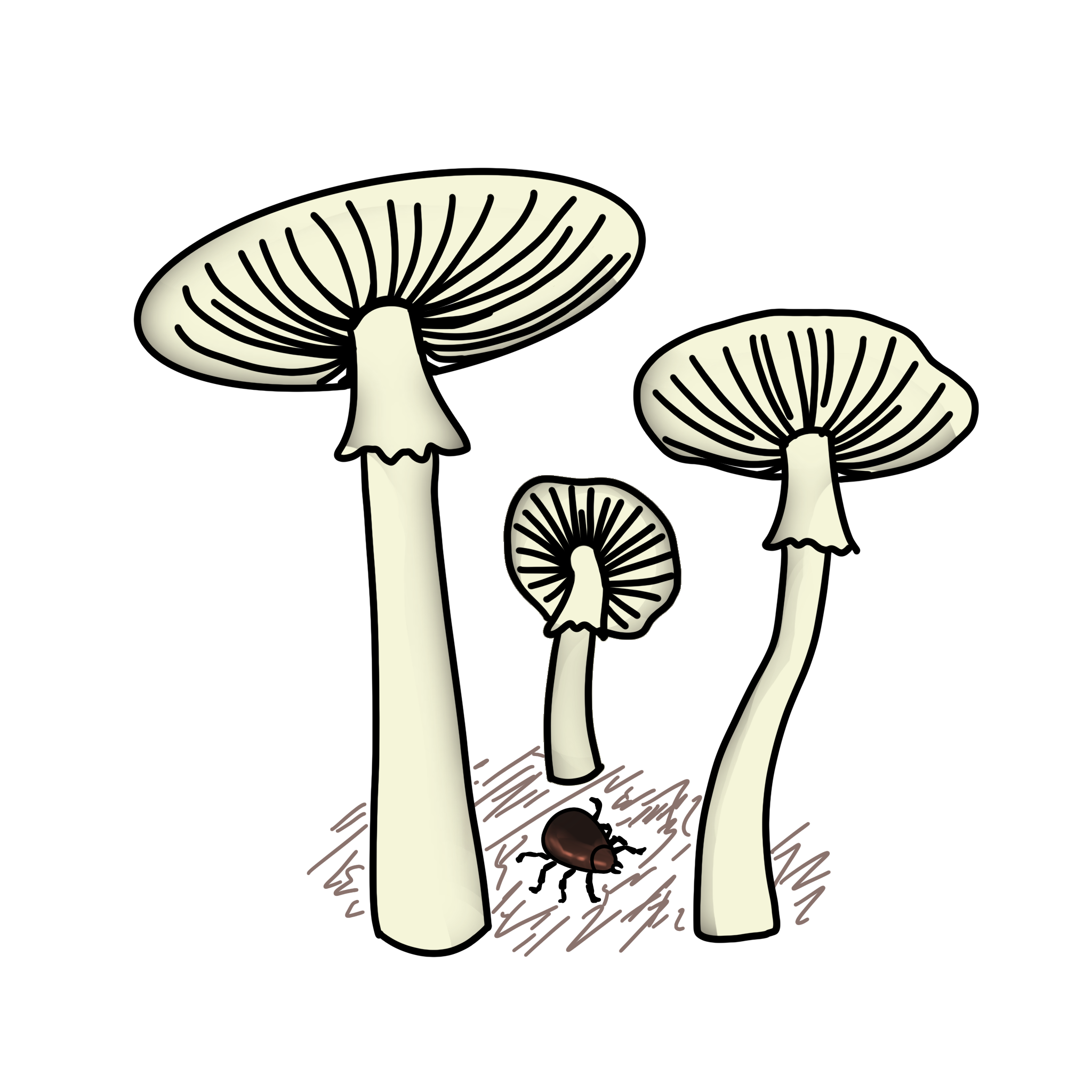Tuesday, May 7
A Friendly Guide to Hazardous Species on Campus
Zachary Kalafer ’24 in Features | April 21, 2023

Students of The Lawrenceville School are notably unaware about local plant and animal life. In order to promote awareness about the diverse species on campus, it is time to introduce profiles of the most dangerous and interesting species at Lawrenceville.
There are two common types of ticks on campus: dog ticks (Dermacentor Variabilis) found in the grass and deer ticks (Ixodes Scapularis) found in the woods, especially in the crossbow hunting grounds. Ticks have eight legs and sesame seed-shaped bodies, with two large eyes located on the front of their body below the head, what we would approximate as “shoulders.” Ticks are very interesting in that their cells are able to divide extremely quickly. When this division occurs, their weight can increase by a factor of 200! Dog ticks are the most common type to encounter, so while they may be annoying, they fortunately do not carry Lyme Disease and are not much worse than a particularly painful mosquito bite. They can be identified by their larger size and mottled white pattern on their back. The deer tick on the other hand, identifiable by its pitch-black heads and legs and its red bodies, carry Lyme Disease and should be removed using tweezers within 24 hours to prevent infection. The Al Rashid Health and Wellness Center (Infirm) will remove a tick if requested, however, if you choose to remove a tick yourself, ensure that you remove the head since it is the primary method of transmission.
The giant stinging nettle is a rare plant to see on campus, however, it is occasionally found growing near ponds and rivers that border grass. The plant has large, serrated green leaves which grow off the sides of their singular magenta stems. If you look closely, the stems appear to have a fuzzy fur covering them with scattered larger hairs: a ruse. The fuzz is actually a field of needles, each made of a glass-like substance that will snap on contact! The broken spikes have structures inside that resemble a hypodermic needle, which is used to inject anyone who touches it with a burning venom! Interestingly, the needles will only break when touched in a certain direction. This direction varies from plant to plant, however, one direction will always be safe.
Everyone knows about poison ivy and its three shiny leaves with wide serrations on the edges and hairy roots that climb trees. However, what many do not know is they themselves might be immune to poison ivy! About one third of the population does not have an allergic reaction on contact with urushiol, the toxic component of the plant, and can touch it without issue. That said, be careful regardless, because it is impossible to tell until contact occurs! Even if you are immune, repeated exposure can increase your sensitivity to the oil and eventually cause a reaction. If you catch poison ivy, rubbing chickweed (a tiny plant with many petalled, sun-shaped white flowers) on the rash can help. Be careful when touching the blistering rash, as doing so can spread the oil to others or other parts of your body.
Three species of deadly fungus are present on campus. Amanita Bisporigera, a pure white mushroom with a bulbous base and a ring around the stem, is also known as the “Northeastern Destroying Angel.” This mushroom, in addition to the similar-looking death cap (Amanita Phalloides), can cause liver failure in days if even a tiny piece is consumed. Dogs often mistake them for edible mushrooms and should be kept as far away from them as possible. A fungus with a similar effect, the Funeral Bell Mushroom (Galerina Marginata) is a small, slimy brown mushroom that grows from rotting wood. It closely resembles certain desirable mushrooms, so learning its appearance is absolutely necessary to avoid an unwanted encounter.
Datura Stramonium is a plant with large spiny leaves, growing mainly on the construction site. It has spiny seed pods that can prick you if you are reckless. Ingesting this plant is unlikely, but there are some reports of people being poisoned from just touching the pods, so it is wise to steer clear of them entirely. This plant has some of the most brutal effects possible, causing severe delirium (terrifying hallucinations which range from friends that are not there to walls made of meat), sweating, dehydration, generalized body pain, diarrhea, fever, possible liver failure, coma, and death. Although the award for Most Deadly Lawrentian Species likely goes to Amanita Bisporigera, the Datura is surely one of the worst plants to expose yourself to.
There are a lot of dangerous plants, animals, and mushrooms abound in New Jersey, but they are also all beautiful in their own way. Next time you brush your leg against a nettle, take a look at the gorgeous crystal spines on the stem, or when you find some beautiful-but-deadly mushrooms, marvel at their handsome forms jutting from the pine needles. As a concluding disclaimer, the more deadly organisms mentioned here can only hurt you if ingested. You are not just going to walk past a datura plant and die instantly, and you are really in no danger of more than a rash just from walking around outside.
Related Articles
- Detention...Dread? Samuel Wang ’26
- A History of Lawrenceville’s Academic Schedules Mira Ponnambalam ’26
- A Guide to Ace Your AP Exams Alice Kim ’27
- Senior Profile: Henry Metz '24 Helen Chang ’26
- Bridging Education and Farming at the Big Red Farm Isabelle Lee ’27
Recent Articles
- Alumni Give Students Advice at Career Fair Vivian Blessing ’27
- Hosting Hun: A White-Out Celebration Louis Park ’26 and Dorothy Lee ’26
- Expanding our Horizons: The Case for Space Exploration Sarah Jang ’27 and Matthew Fu ’27
- Reassess Our Large Language Models
- Shopping Sustainably: Rocky’s Boutique and the Flea Market Ellen Jordan ’26